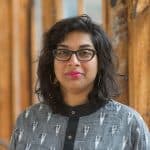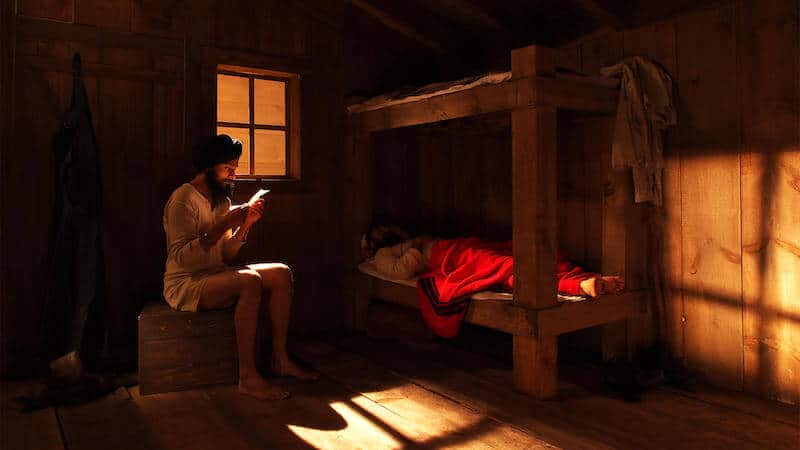Repetition is Practice
The art of P. MansaramThe Art Museum at the University of Toronto
P. Mansaram: The Medium is the Medium is the Medium
February 2 – March 23, 2019
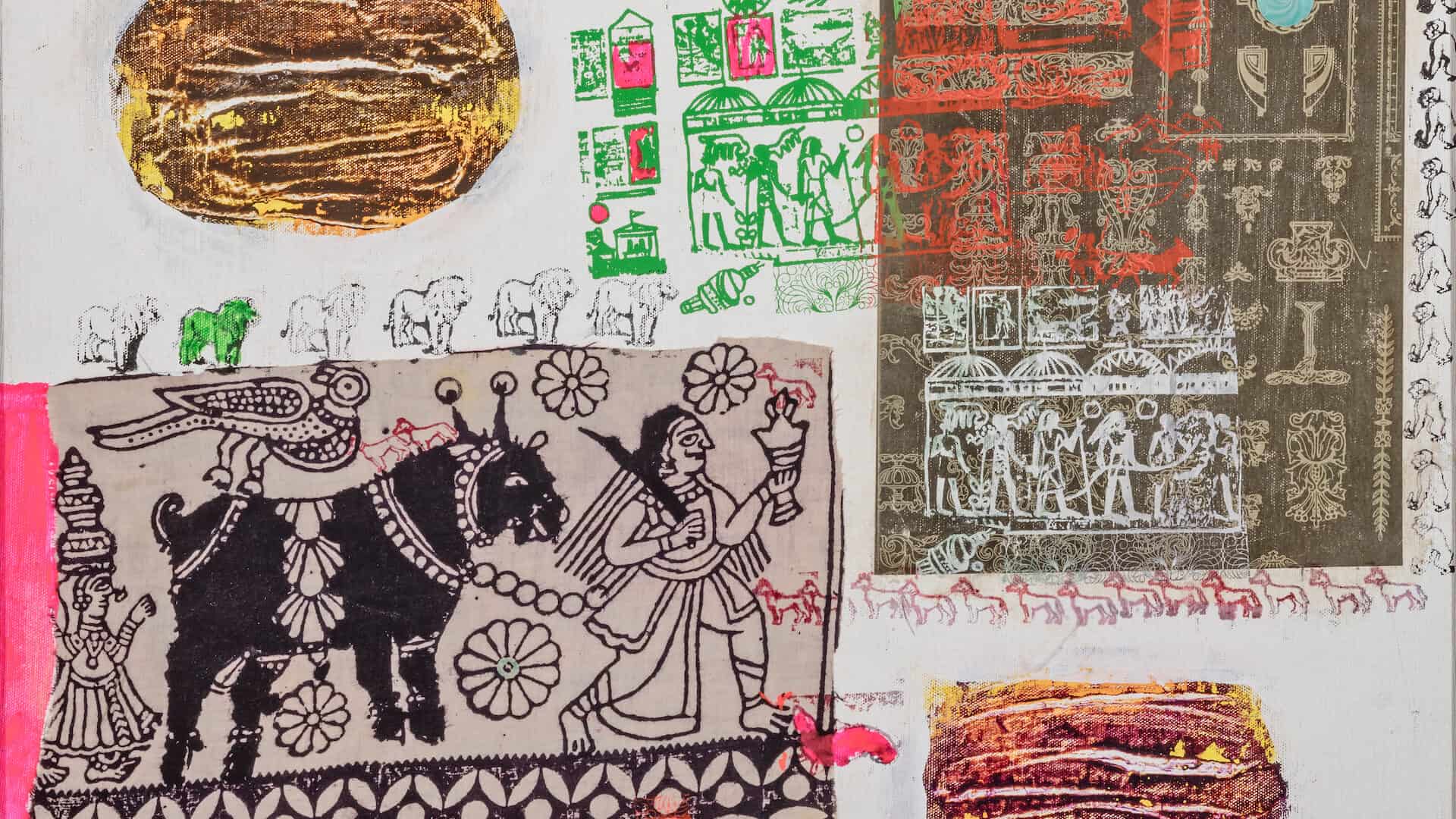
Share Article
Repetition is practice.
Repetition is tedium.
Repetition is love.
Repetition is mastery.
Repetition is play.
Repetition is memory.
Repetition is cleansing.
Repetition is purposeful.
Repetition is control.
Repetition is transcendence.
Repetition is meditation.
Repetition is work.
Repetition is concentration.
Repetition is contemplation.
Repetition is disruptive.
Repetition is building.
Repetition is starting over.
Repetition is futile.
Repetition is insistence.
Repetition is boring.
Repetition is god.
Repetition is practice, again.

Looking, repeatedly, at P. Mansaram’s sizeable body of work, one can slowly start to discern trends, commonalities, and intangible narratives between artworks across time. Over the course of his five-decade career, he has produced paintings, prints, sculptures, photographs, videos and textile-based works. From one work to another, colours and images—human figures, animals, buildings, geographies—take on new meanings, changing over time and in different contexts. In his work, he has found ways for the ancient and modern to coexist, to build on each other to create unexpected temporalities.
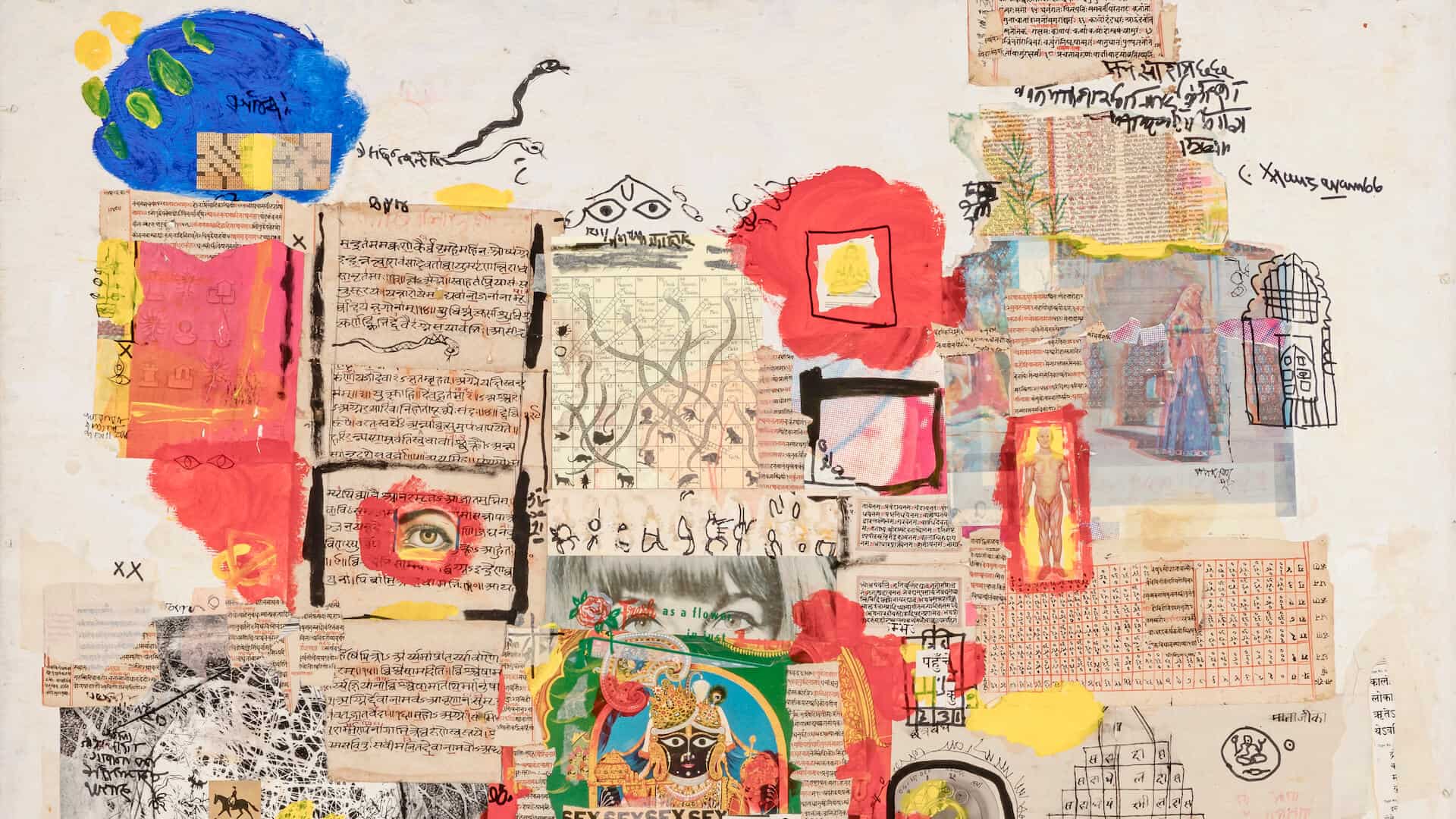
P. Mansaram: The Medium is the Medium is the Medium. The Art Museum at the University of Toronto. February 2 – March 23, 2019
P. Mansaram’s oeuvre defies simplified categorization. In his reimagining of time, historical ruptures—whether in his personal life, his home country of India or his adopted home in Canada—do not create amnesia; rather, they add more ingredients to his creative process. They complicate metaphors and symbols. They appear, for instance, as a hand-drawn invocation of a lustful sun god framed in lace in Machine and Khajuraho, an homage to the 1,000-year-old erotic carvings of Khajuraho. To make the Delwara Columns, he spent hours playing around in photocopy shops in the 70s to create three-dimensional collages of the ancient carvings on the pillars of the temple in Delwara, near his hometown in India, layering the original images to create a fantasy sculpture. Throughout Mansaram’s work, we find figures morphed, redrawn, repeated, and mirrored, conjuring unending feelings of travel through time, dimension, and territory.

P. Mansaram: The Medium is the Medium is the Medium. The Art Museum at the University of Toronto. February 2 – March 23, 2019
During a long studio visit at Mansaram's house in Burlington, we mention that his technique—the fluidity, repetition, and dream-like imagery—reminds us of a daily yoga practice. In response, he recounts a half-hour-long story that begins in 1934, with his birth in Mount Abu, and ends in Bombay in 1955, when he first encountered yoga practice and incorporated it into his life. Taru, his love, admonishes him, "not all stories need to start in Mount Abu." But for him, all stories do start there—with his birth, and the birth of the nation.

P. Mansaram: The Medium is the Medium is the Medium. The Art Museum at the University of Toronto. February 2 – March 23, 2019
During the Indian independence movement, hand-woven Indian textiles became symbols of protest. The practice of weaving was an essential way to rebel against British economic control—which is why still today, by law the Indian flag must be made of khadi, a hand-spun cloth. Mansaram's first position after art school was at the Weaver's Service Centre in Calcutta. He took the opportunity to experiment with traditional weaving practices in the creation of cutting-edge textile works—one of which was used to decorate the room where Jackie Kennedy stayed as Jawaharlal Nehru's guest in 1962. The piece still hangs there today. Mansaram's life has been full of a kind of kismet that was characteristic of the post-independence period. When Mansaram was in his twenties and thirties, Nehruvian socialism ignited experimentation in India. It was time to create a new nation, new societies, and new art forms.
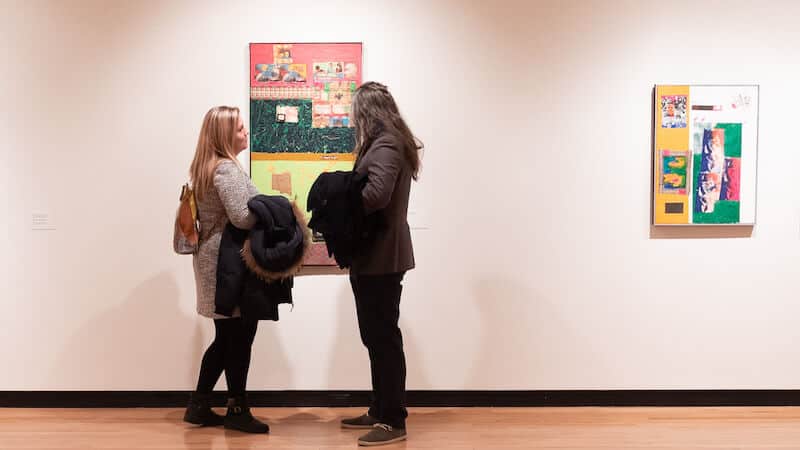
P. Mansaram: The Medium is the Medium is the Medium. The Art Museum at the University of Toronto. February 2 – March 23, 2019
Buzzing with the vibrancy of millennia of arts and culture, Mansaram carried this energy over to Canada in the late 1960s. At that time, Canada was a younger, more confident settler-colonial state that proclaimed history began sometime in the late 1800s—no matter that Indigenous life had and has continued to refuse the state's attempted rewriting of history. Today, we still ask, how do the ancient and the contemporary co-exist here? How can an art practice like Mansaram's, with its reimaginings of time and place, help us to reclaim, reconcile, or break constructed linearities between past and present, east and west?

P. Mansaram: The Medium is the Medium is the Medium. The Art Museum at the University of Toronto. February 2 – March 23, 2019
Serendipity followed Mansaram to Canada, and he quickly established his art practice in his new home. He began teaching and would go on to train generations of art students. He experimented with new technologies, created happenings and exhibitions with cultural theorists like Marshall McLuhan and gallerists like Av Isaacs. He was able to think through form, theory, and artistic strategies. Within his practice, he unburdened images laden with meaning and freed his work from cultural constructions of a binary between east and west. Rather than falling back on nostalgia and loss, Mansaram used strategies that gave space for his practice to expand playfully, for his images to develop new connotations in a global context. He chose to create disruption to create continuity. Disruption became his medium.
In The Medium is the Medium is the Medium, a medium is means for communication, messaging, or poetry.
A medium is a middle or halfway state or ground.
A medium is a person, animal, or object through which disembodied spirits communicate with embodied spirits.
A medium is the singular of media.
A medium is a message.
A medium is a medium.
The medium became his strategy.
In a number of Mansaram's pieces, we find a horse. On a green pasture of paint, its plastic figure dashes along, facing both a miniature Maharaja horse and a crudely hand-drawn replica of that same horse. In a video, a horse is pissing on the streets of Bombay. On paper, a regal horse's leg has been replaced by that of a man.

P. Mansaram: The Medium is the Medium is the Medium. The Art Museum at the University of Toronto. February 2 – March 23, 2019
This hallucinatory repetition is both intentional and spontaneous, both rigorous and playful, both personal and public. It creates a thread of lineage between Mansaram's works, much like other artists' use of technique or subject matter to create their own continuities. As Mansaram once gently explained, seeing an image in multiple places is akin to being in love—the image of your lover appearing to you everywhere. Insistently imprinting its image seems to be his way of enacting love.



